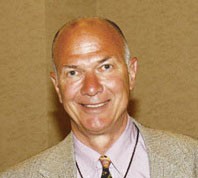Shedding light on part-time and contingent faculty

Feb 23, 2015
This past week in my “Foundations of the Human Movement Sciences” course at Grand Valley State University, students have been learning about Adam Smith, capitalism and capitalism’s relationship to modern games, sport and health.
In class, I was reminded again that a critical part of capitalism is an informed and educated customer/buyer/consumer. For some reason, as I reflected on educated customers and buyers, I thought about our students and next week’s planned, “National Adjunct Walkout Day” on Wednesday, Feb. 25.
National Adjunct Walkout Day is a nationwide protest to shed light on the current status of part-time and contingent faculty. I wondered how many students at GVSU, in Michigan or even nationally were aware of the planned protest to raise awareness about part-time and contingent faculty.
Students, after all, are the customers and buyers of education at colleges and universities, and their collective voice and actions are important in terms of keeping the producers – being college and university boards and administration – accountable.
The facts as put forward in a 2014 report by the United States House of Representatives titled, “The Just-In-Time Professor: A Staff Report Summarizing eForum Responses on the Working Conditions of Contingent Faculty in Higher Education” said the following:
- There is a growing and visible trend of part-time and contingent faculty (75.5 percent of instructors at institutions granting two or four degrees held contingent jobs and/or were not on the track to tenure);
- The pay is low (medium pay for the standard three-credit course is $2,700);
- The hours are long and often involve commutes from one job to another;
- There is virtually no access to employer-provided benefits like healthcare and retirement;
- Job instability is high with unpredictable course loads; and,
- Despite that fact that part-time faculty are highly skilled (a vast majority have Master’s degrees, 50 percent have Ph.D.’s) there are problems with career advancement and professional support.
The report states that, “In short, adjuncts and other contingent faculty likely make up the most highly educated and experienced workers on food stamps and other public assistance in the country (p. 26). For a full copy of the report go to: http://1.usa.gov/1aPfZHF
Students at GVSU and beyond should be aware of the facts regarding faculty who teach at colleges and universities. At present, I am not aware of any movement at GVSU for part-time or contingent faculty to participate in next Wednesday’s protest. That is a decision that each part-time or contingent faculty will need to make on their own.
I will say however that, being a tenured professor, I support the actions of ALL faculty to educate and inform our students about the current status of part-time and contingent faculty at GVSU and beyond. One channel to shedding more light on the above might be for students to ask their professors about their status – are they are satisfied with their current working conditions?
John Kilbourne, Ph.D. is a professor of Movement Science at GVSU.

























